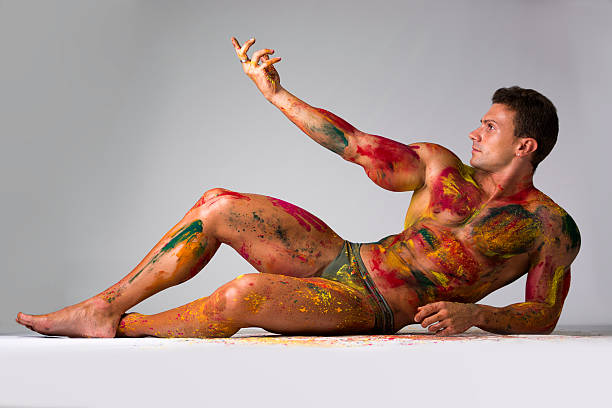According to guidelines
Children under the age of three should not have their faces painted. Small children are often unable to sit still for long periods or may move without warning, which could result in paint getting into their eyes or mouths. Dehydration is also more common among young children because of their sensitive skin.
If your client (or their parent) has sensitive skin, food allergies, or reactions to soaps, creams, and dyes, ask them if they suffer from any of these conditions. Depending on whether the client will react to the paint, you should perform a small patch test (on another part of their body) first. Painting a client’s face or body is ultimately your decision.
You should check the client’s skin for scratches and infection. Check for conjunctivitis, lice, colds or flu, chicken pox and conjunctivitis. Visit HealthyWA (external site) to learn more about these conditions and their symptoms.
In order to avoid infection or further exacerbate the condition of someone with acne, dermatitis, or other skin conditions, it is best not to paint their faces.
Use soap and warm water or disposable wipes to clean the area (face, arm, leg) before painting. When wiping runny noses, be extra careful around the eyes.
Be sure a parent or guardian is supervising a child while they are painting their faces.
Watch out!
Even nontoxic and pure colors can cause allergic reactions in some people.
Stop the painting session immediately if your client exhibits any symptoms of an allergic reaction. In an emergency, dial 000.
Allergic reactions can include the following symptoms:
- flushing
- breathing difficulties
- symptoms
- include puffiness and swelling around the eyes.
Supplies must be purchased beforehand.
All cosmetic preparations, including paints, crayons, inks, glitters, and other cosmetic items, should be safe and specifically developed for human skin.
It does not necessarily mean that a product is non-toxic when it says that on the label. Various approved chemicals and colorants are used in stationery and craft paints that can cause allergies in some people.
The handling and storage of bulk supplies should be performed in a sterile environment to prevent contamination. You should use clean spatulas when taking paints and glitters from the stock.
Make sure brushes, pens, and other tools are cleaned and disinfected.
Color applicators that are single-use disposables, such as cotton swabs and sponges, are highly recommended.
Painting brushes should be thoroughly cleaned with soap and warm water, and soaked in 70 percent isopropyl alcohol for at least two minutes before they are used again. Cleaning brushes after each client is a good idea.
Changing brush cleaning water after each client is a good idea.
To keep the tips of face paint pens and markers clean, use a 70% isopropyl alcohol swab after every use.
You must resharpen lip and eye pencils after each use, and clean the sharpener frequently.
Cleanable, non-porous materials should be used for reusable stencils. Use 70% isopropyl alcohol to clean reusable stencils after each use.
Disposable paper towels should be used.

